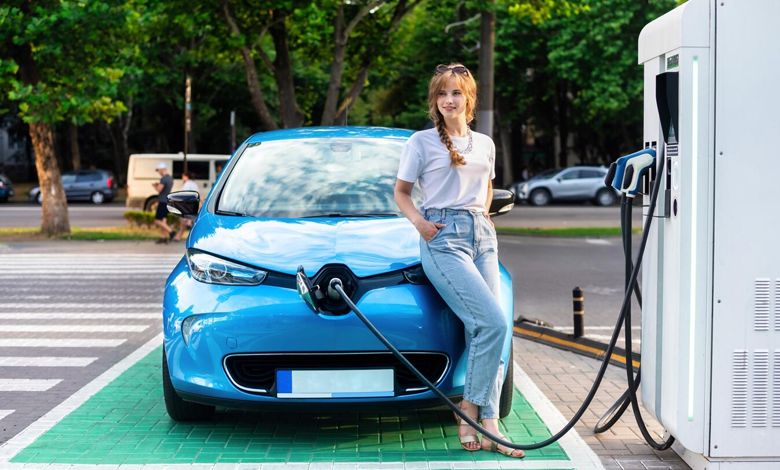
Electric vehicles (EVs) are rapidly gaining momentum, promising a cleaner and more sustainable future for transportation. But for this revolution to truly take hold, a robust and accessible EV charging infrastructure is crucial. This article delves into the current state, key trends, and challenges of EV charging, exploring its impact and future outlook.
Fueling the Transition: Drivers of Growth
Several factors are propelling the expansion of EV charging infrastructure:
- Government Policies and Incentives: Many governments are offering subsidies, tax breaks, and grants to encourage the installation of charging stations, both public and private. This includes the US Infrastructure Investment and Jobs Act, allocating billions towards EV infrastructure development.
- Environmental Concerns and Climate Change: As the urgency to combat climate change grows, EVs offer a significant reduction in greenhouse gas emissions compared to fossil fuel vehicles. Governments and individuals are increasingly prioritizing investments in clean energy solutions, including charging infrastructure.
- Technological Advancements: Battery technology is advancing quickly, giving us batteries that last longer and charge faster. Additionally, innovations in charging technologies like DC fast chargers and ultra-fast chargers are reducing charging times significantly, addressing a major concern for potential EV buyers.
- Cost Reductions: While upfront costs remain higher, EV prices are decreasing due to economies of scale and production advancements. Additionally, charging costs are often lower than gasoline, especially with rising fuel prices.
- Consumer Demand: Public interest in EVs is surging, driven by environmental consciousness, economic considerations, and the appeal of cleaner, quieter transportation. This rising demand puts pressure on the development of a robust charging network.
A Landscape of Charging Options
The EV charging landscape offers diverse options, catering to various needs:
- Home charging: This is the most common solution, with Level 2 chargers providing overnight charging.
- Public charging: Networks of charging stations are expanding, offering Level 2 and fast-charging options (DC fast chargers) for on-the-go needs.
- Workplace charging: Employers are increasingly offering charging stations to attract and retain talent.
- Destination charging: Shopping malls, hotels, and other destinations are installing chargers to enhance customer experience.
Navigating the Road Ahead: Key Trends and Developments
The EV charging landscape is evolving rapidly, with several key trends emerging:
- Beyond Public Stations: While public charging is crucial, workplace charging, apartment complex charging and home charging solutions are becoming increasingly important. This diversified approach caters to various needs and usage patterns.
- Smart Charging and Grid Integration: Integrating charging infrastructure with smart grids optimizes energy usage, balancing demand and ensuring grid stability. Additionally, bidirectional charging allows EVs to feed energy back into the grid, further enhancing efficiency.
- Geographical Disparities: Urban areas tend to have better access to charging stations compared to rural areas. Bridging this gap is crucial for ensuring equitable access to EV technology.
- Innovative Business Models: Public-private partnerships, subscription services, and pay-per-use models are emerging to address financing challenges and encourage investment in charging infrastructure.
Challenges and Opportunities: Overcoming Hurdles
Despite the progress, hurdles remain:
- High Upfront Costs: Installing charging stations, especially fast chargers, requires significant investment. Creative financing models are needed to overcome this barrier.
- Permitting and Regulatory Hurdles: Complex permitting processes can delay and hinder infrastructure development. Streamlining regulations and standardized protocols are crucial.
- Grid Capacity and Upgrade Needs: Integrating a large number of EVs into the grid requires infrastructure upgrades to manage increased demand efficiently.
- Equity and Accessibility: Underserved communities often lack access to charging infrastructure, exacerbating existing transportation inequities. Targeted investments and community-driven solutions are needed.
These challenges present opportunities for:
- Public-Private Partnerships: Collaborative efforts between governments, utilities, and private companies can leverage resources and expertise to accelerate infrastructure development.
- Standardization and Interoperability: Standardized charging protocols ensure compatibility across different brands and models, reducing consumer confusion and promoting wider adoption.
- Community-Driven Projects: Empowering local communities to develop and manage charging infrastructure based on their specific needs fosters inclusivity and equitable access.
- Targeted Investments: Directing resources towards underserved communities and high-needs areas can bridge the equity gap and ensure everyone benefits from the EV revolution.
Powering Progress: Impact and Future Outlook
A robust EV charging infrastructure can deliver transformative benefits:
- Environmental Sustainability: Widespread EV adoption significantly reduces greenhouse gas emissions, contributing to cleaner air and mitigating climate change.
- Economic Growth and Job Creation: The clean energy sector, including EV infrastructure development, offers significant job creation opportunities, boosting economic growth.
- Personal Mobility and Transportation Equity: EVs offer quieter, cleaner transportation options, potentially improving public health and air quality. Additionally, accessible charging infrastructure promotes equity in access to personal mobility.
How EV Charging Software is Resolving the Adoption of Electric Vehicles?
EV charging software plays a crucial role in resolving several key challenges that hinder the widespread adoption of electric vehicles. Here are some of the ways it’s making a difference:
Improving Accessibility and Convenience
- Network Management: Software helps manage charging networks, showing drivers available stations, their real-time status, and estimated charging times. This transparency reduces range anxiety and makes finding charge points easier.
- Smart Charging: Features like scheduling charges during off-peak hours and load balancing across multiple chargers optimize energy usage and ensure stations are available when needed.
- Payment Integration: Seamless payment options through mobile apps or RFID cards eliminate the hassle of carrying cash or multiple payment methods.
Enhancing Operational Efficiency and Sustainability
- Remote Monitoring and Diagnostics: Software allows real-time monitoring of charger health, identifying and resolving issues quickly, minimizing downtime, and ensuring network reliability.
- Energy Management: Tools like dynamic power allocation and integration with renewable energy sources optimize energy usage, reducing costs and minimizing environmental impact.
- Data-driven Insights: Software generates valuable data on charging patterns and user behavior, enabling operators to make informed decisions about network expansion and pricing strategies.
Supporting Diverse Use Cases
- Fleet Management: Software caters to the specific needs of fleet operators, like tracking vehicle locations, monitoring charging status, and managing billing for individual vehicles.
- Workplace Charging: Solutions tailored for workplaces facilitate employee EV charging, encouraging sustainable commuting and attracting talent.
- Residential Charging: Software enables smart charging at home, optimizing energy usage and integrating with home energy management systems.
The Future of EV Charging Apps
The potential of EV charging apps is vast. Integration with smart charging infrastructure and vehicle telematics could enable features like personalized charging recommendations, automated payments, and real-time battery health monitoring. Additionally, partnerships with businesses and municipalities could offer exclusive discounts and incentives for EV drivers, further accelerating adoption.
Conclusion
EV charging apps are playing a pivotal role in overcoming the challenges associated with charging infrastructure and making electric vehicles a more attractive option for a wider audience. By providing convenience, accessibility, and valuable information, these apps are paving the way for a future where electric mobility is the norm, not the exception.
Author Bio:

Ankit Patel is a Director of Sales & Project Manager at XongoLab Technologies LLP, a leading mobile app development company that provides unmatched web and mobile app solutions across the globe. In his free time, he loves writing about new and upcoming technologies, UI/UX design, and marketing. His articles have been published on popular platforms such as TechTarget, SmallBizDaily, JaxEnter, Social-Hire, TorqueMag, and many others.
Twitter: https://twitter.com/imankitptl
LinkedIn: https://www.linkedin.com/in/imankitpatel








